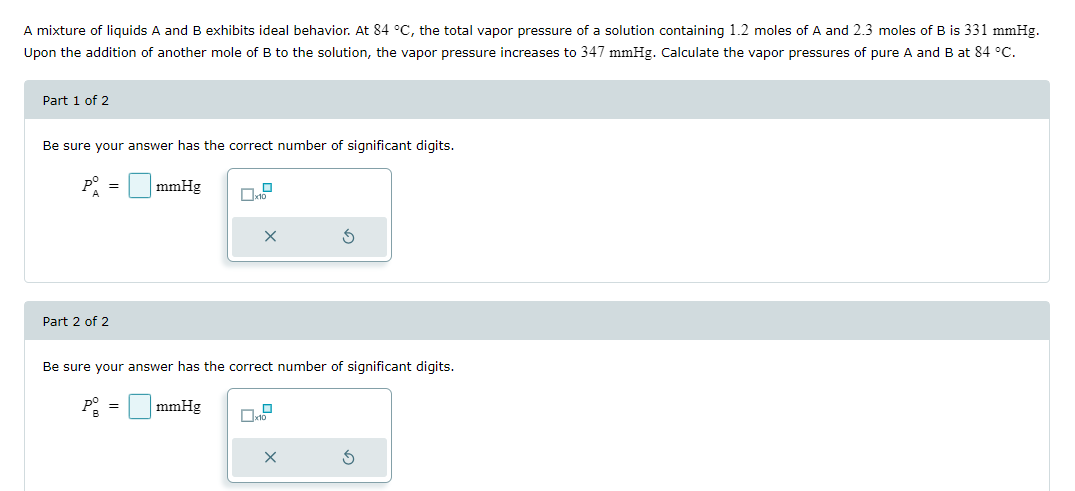A solution is prepared by dissolving 371 g of sucrose (C12H22O11) in 591 g of water. What is the vapor pressure of this solution at 30 °C? Be sure your answer has the correct number of significant digits. Note: Reference the Vapor pressure of water (H₂O) at selected temperatures table for additional information. Vapor pressure = mmHg
States of Matter
The substance that constitutes everything in the universe is known as matter. Matter comprises atoms which in turn are composed of electrons, protons, and neutrons. Different atoms combine together to give rise to molecules that act as a foundation for all kinds of substances. There are five states of matter based on their energies of attraction, namely solid, liquid, gases, plasma, and BEC (Bose-Einstein condensates).
Chemical Reactions and Equations
When a chemical species is transformed into another chemical species it is said to have undergone a chemical reaction. It consists of breaking existing bonds and forming new bonds by changing the position of electrons. These reactions are best explained using a chemical equation.
Please help me answer this homework it is due today


Step by step
Solved in 4 steps with 14 images









